An ancient beach reborn — and renamed for a clam
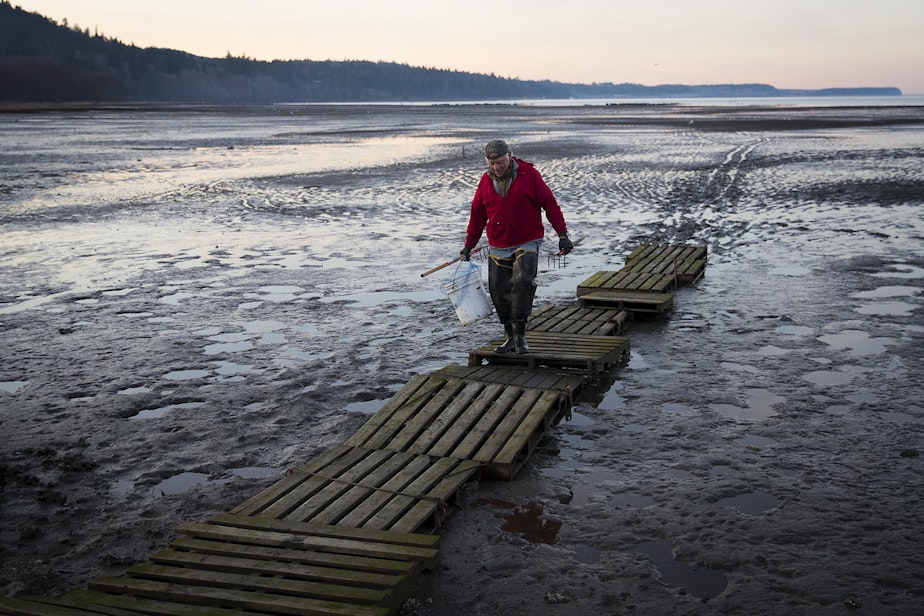
“They are delicious when steamed open and dipped in hot butter,” according to the Washington Department of Fish and Wildlife.
They’re also disappearing, according to scientists who've studied them from Alaska to California.
Littleneck clams are golf ball-sized bivalves that have sustained the Jamestown S’Klallam and other Northwest tribes for centuries.
The S’Klallam have returned the favor, in a way: by restoring and renaming a beach on Sequim Bay, near the northeast corner of the Olympic Peninsula, for the clams.
The area around what is now Littleneck Beach has Puget Sound’s densest known populations of this increasingly rare species.
“A lot of littlenecks out here,” Marlin Holden, 76, said as he dug up clams with a small rake. Holden, an elder of the Jamestown S’Klallam tribe, raises oysters and digs Manila and littleneck clams on the beach now known as Littleneck Beach.
Kneeling on the wet ground to save his back, Holden raked the muck for clams. “I can dig about 80 pounds a night,” he said.
Sponsored
Holden said he mostly digs the nonnative Manila clams preferred by restaurants. They cook faster.
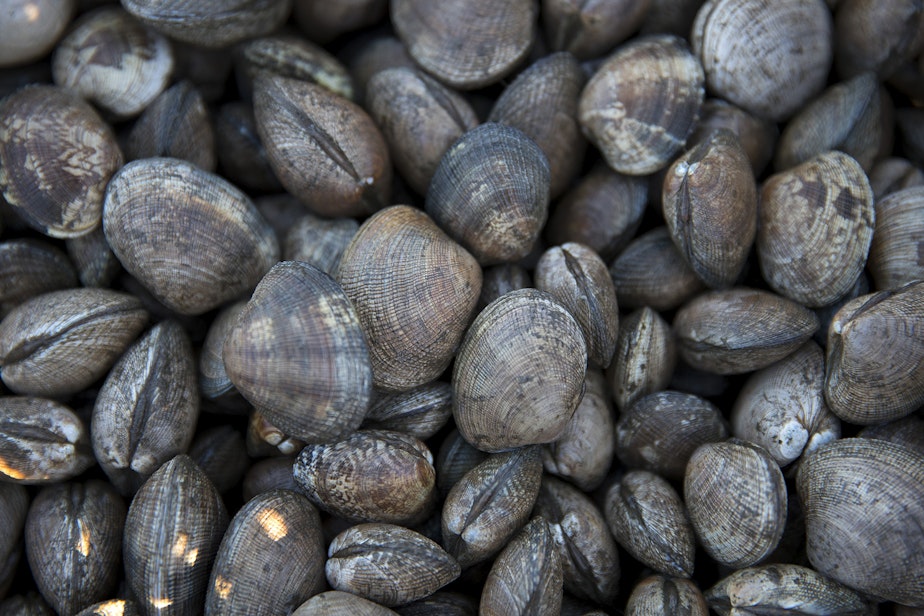
At low tide, Sequim Bay is ringed by acres of mud flats. Great habitat for clams; a boot-sucking hazard for pedestrians.
“Step softly and easy because you can go down real quick,” Holden said in his hip-high rubber boots. “At least old guys can,” he laughed.
Sponsored
One side of Holden’s family is Norwegian. On the other side, he is the great-great-grandson of Chief Chetzemoka, one of the signers of the peace treaties of 1855, in which Washington tribes gave up their lands in exchange for the right to keep hunting, fishing and digging shellfish in their traditional areas.
Since Holden was a kid, this beach was just known as “the log yard” or “the log dump.”
For decades, logging trucks dumped their loads here. Once enough logs piled up, they’d be assembled into rafts and floated off to sawmills on the urban side of Puget Sound.
Eventually, the log yard went out of business, and the tribe bought the degraded site around 2001.
The tribe and various government partners then restored the mudflat and “the Jimmy”-- Jimmycomelately Creek. It runs through the beach and supports several species of salmon, including the threatened Hood Canal summer chum.
Sponsored
Just seven of those chums returned to the creek in 1999. After restoration work on the creek and its estuary was completed, 6,500 summer chums swam past Littleneck Beach and up the Jimmy in 2015.
Holden said that, one snowy night out digging clams, he heard his ancestors say the logyard needed a new name to reflect their history.
“I heard what the ancestors said,” Holden said. “People might think I'm crazy, but I did.”
“It’s always been known as a spot for littlenecks,” Jamestown S’Klallam elder Kathy Duncan said. “Whenever clams were in season, we would eat them all the time.”
“They’re so good,” she said.
Holden got the tribe to file a petition with the Washington Board on Geographic Names to rename the beach Littleneck Beach.
Sponsored
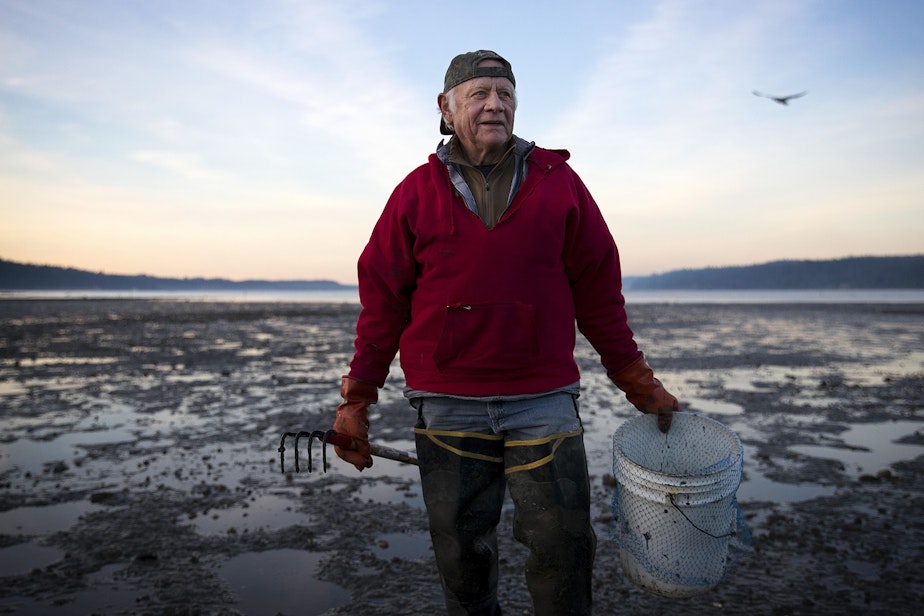
Northwest tribes are often described as salmon people. But they’re also shellfish people.
“I would say on the whole the shellfish were absolutely as important to the S’Klallam as salmon were,” Jamestown S’Klallam tribe historic preservationist David Brownell said.
“The beauty of it being that they did it for thousands of years without exploiting it to the point of collapse," Brownell continued, "which unfortunately we seem to be taking a while to figure out.”
Sponsored
Clams would be dried and put on a string made of cedar or nettle: A littleneck necklace.
“Guys would go out, hunters or warriors, whenever you're going out in the field, you would wear a string of these dried clams and then whenever you got hungry you just start chewing on one,” Brownell said. “So it's kind of like beef jerky on the go, but clam jerky.”
That clam jerky was almost a form of currency, used to barter with tribes that didn’t have easy access to these nuggets of nutrition.
“They would sell these strings of clams as far inland as like the Yakama,” Brownell said.
Brownell has done archaeological digs along the shores near Littleneck Beach, and found piles of roasted clamshells more than 1,100 years old.
So when Holden digs clams, he’s keeping up a very long tradition.
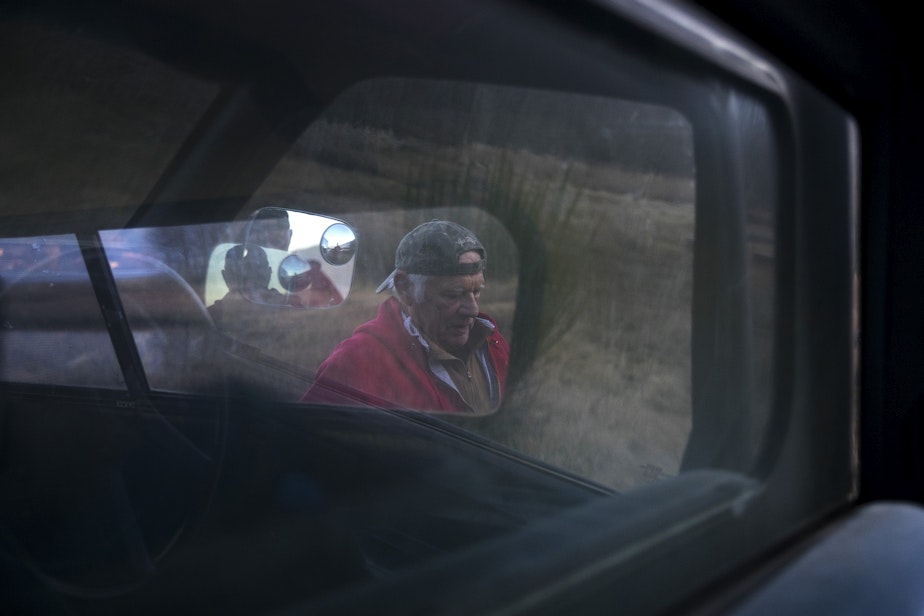
Across Puget Sound, Swinomish elder and Northwest Indian Fisheries Commission chair Lorraine Loomis had noticed littleneck clams were getting hard to find on beaches near the Swinomish reservation, about an hour north of Seattle.
“All of a sudden, they kind of disappeared,” she said. “You couldn't even get a bucketful.”
At rites including the annual ceremony to bless the tribe’s fishing fleet and welcome the first salmon to return from sea, a community meal is served with traditional Swinomish foods: salmon, crabs and clams.
“Now we have to buy our littlenecks for the ceremony,” Loomis said.
So Loomis asked her tribe’s shellfish scientists — the tribe of 900 people employs six shellfish biologists — to look into it.
They launched a study of native littlenecks, butter clams and heart cockles, monitoring the mollusks on 11 Puget Sound beaches and combing the scientific literature for similar work up and down the West Coast.
“They're declining throughout the area, on all 11 beaches,” Swinomish senior shellfish biologist Julie Barber said of the littlenecks, “and they have been declining pretty much since 1989.”
Butter clam populations increased for most of that time, though they began their own downturn around 2010.
Barber said they hand-entered obscure data from the 1980s that they'd dug out of filing cabinets at the Washington Department of Fish and Wildlife.
The scientists spotted similar trends from Alaska to California, suggesting something big was going on, not driven by conditions at any particular stretch of shoreline.
They suspect that changing ocean conditions, fueled by a warming climate, have left less algae in the ocean for clams to slurp up.
Barber said an oceanographic cycle called the North Pacific Gyre Oscillation, a slower cousin of the more familiar El Niño, appears to be intensifying as the North Pacific warms and reducing algae production.
“Essentially what we really need to focus on is trying to get our politicians to address climate change,” Barber said.
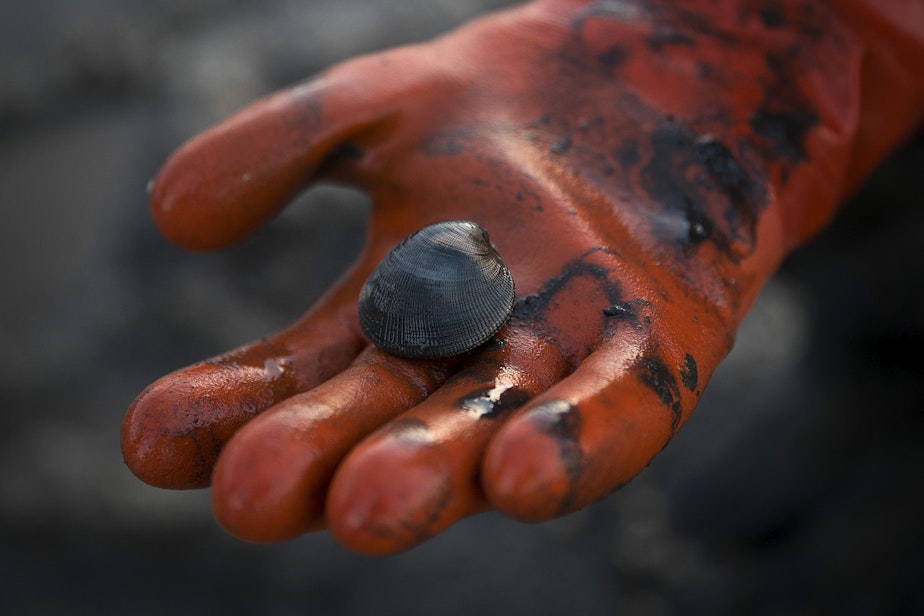
Like many biologists, Barber is pretty passionate about the creatures she studies.
“They're gorgeous,” she said of native littlenecks. “They have cross hatches on their shell. So instead of just rings going in one direction it looks like latitude and longitude lines. So it’s really quite beautiful.”
Barber calls clams “total underdogs.”
They don’t draw the affection that orcas do, nor the attention that salmon do. But these bottom-dwelling filter feeders are a key part of the food web of Puget Sound that culminates in charismatic orcas and salmon.
“So we really should be paying attention to the fact that there is a range-wide decline occurring,” Barber said.

Back on Sequim Bay, littleneck populations are down, but they remain much higher than anywhere else scientists looked in Puget Sound.
And the Jamestown S’Klallam petition worked. The Washington Board on Geographic Names officially renamed the old log dump "Littleneck Beach" in December.
“They may forget who did all of this, but it's in our history now,” Holden said. “It's in our history forever that we took this beach back and called it our own name.”
“I wish I could pronounce it in Indian, but I can't,” he added.
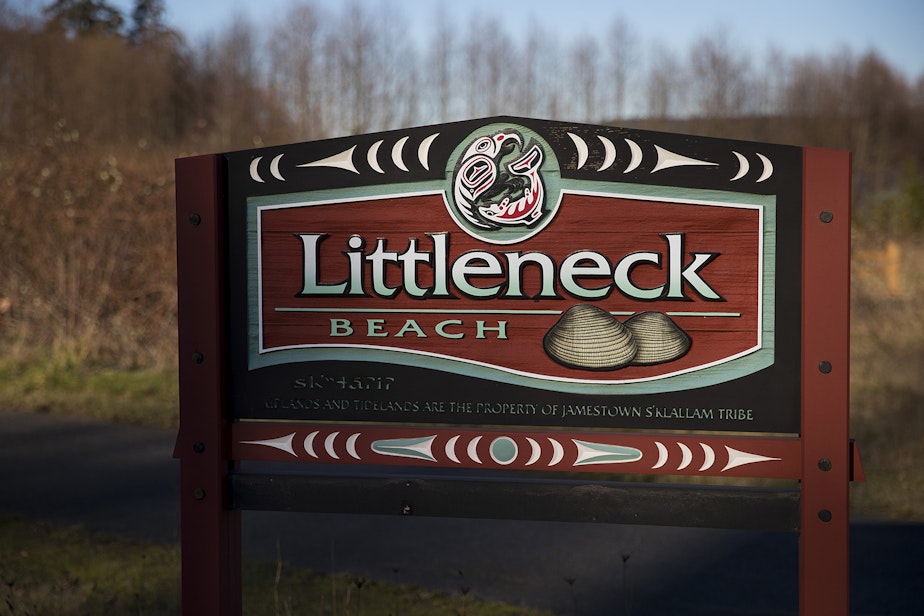
(The S’Klallam name for the beach, and the littleneck clam, is: sk̕ʷɬáʔiʔ.)
Holden said he’s got the naming bug now. He hopes to name a small, unnamed creek that runs onto the beach, past the tribe’s veterans’ memorial, Warrior Creek.




